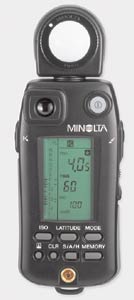I am new to flash photography or rather photography as I just took up this hobby few months ago.
I have read articles from the web and books and came across terms like Guide Number, Aperture, Flash to Subject distance etc. I am trying to understand how these terms are related to one and another.
I know that Guide Number = Aperture X Flash to Subject distance. For example, if I am using a Flash with Guide Number 58m and I need to select f/4 then my Flash to Subject distance becomes 14.5m. I may need to power down my flash to arrive at a practical distance for shooting, say 2m from the subject.
Am I correct to say that if I power down my flash then my Guide Number will be reduced accordingly as below?
Full power = 58m
1/2 power = 41m
1/4 power = 29m
1/8 power = 20.5m
1/16 power = 14.5m
1/32 power = 10.3m
1/64 power = 7.3m
1/128 power = 5.1m
Based on the above example, I should be selecting a power range from 1/64 to 1/32.
I have read articles from the web and books and came across terms like Guide Number, Aperture, Flash to Subject distance etc. I am trying to understand how these terms are related to one and another.
I know that Guide Number = Aperture X Flash to Subject distance. For example, if I am using a Flash with Guide Number 58m and I need to select f/4 then my Flash to Subject distance becomes 14.5m. I may need to power down my flash to arrive at a practical distance for shooting, say 2m from the subject.
Am I correct to say that if I power down my flash then my Guide Number will be reduced accordingly as below?
Full power = 58m
1/2 power = 41m
1/4 power = 29m
1/8 power = 20.5m
1/16 power = 14.5m
1/32 power = 10.3m
1/64 power = 7.3m
1/128 power = 5.1m
Based on the above example, I should be selecting a power range from 1/64 to 1/32.



